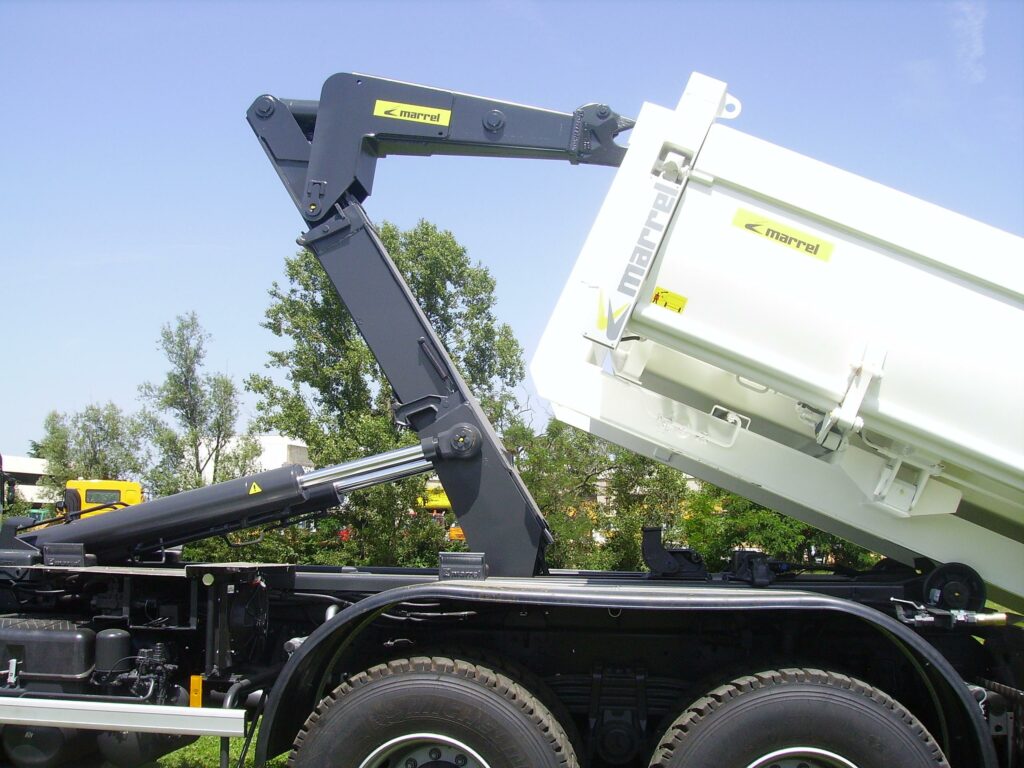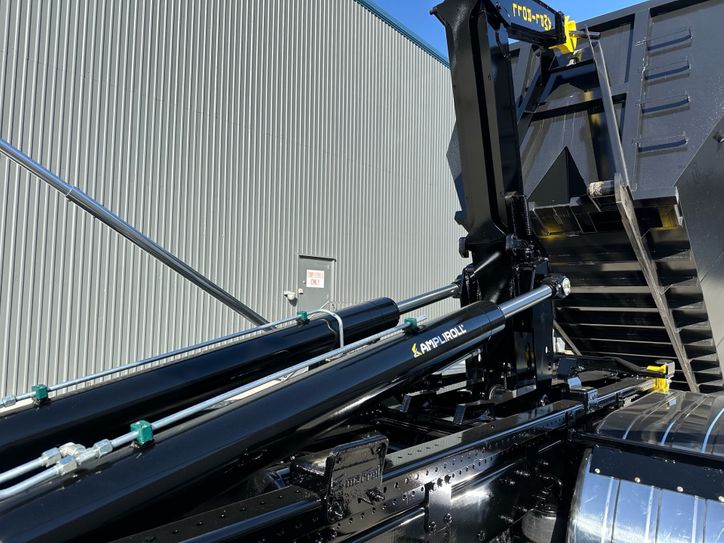HOOKED ON HIGH PRESSURE: Why the hook hoist industry is moving away from low-pressure, 3,000-3,500-psi hydraulics.
Forty years ago, Ampliroll introduced a new hook loader concept to North America. Instead of using 3,000-3,500-psi hydraulic pumps like all others, Ampliroll employed high-pressure (i.e., 5,000 psi) pumps.
The new engineering caused a mild uproar—the likes of which continue today!
Revolutionary hook loader technology? Not really.
Ampliroll’s 5,000-psi pumps for roll-offs were new but not revolutionary. They were the mainstay of hook systems in Europe.
Throughout the continent, high-pressure pumps have been proven reliable over decades of use. They took on tough jobs the same as North America every working day.
The reaction of North American hook loader makers and roll-off users was mixed. All were curious. Some “reverse-engineered” the concept with uneven results. When retrofitted to the 5,000-psi standard, their large-size, low-pressure components negated a key advantage to the high-pressure system: smaller and lighter components. Meanwhile, others were simply skeptical.
High-pressure systems: 7 reasons why they’re North America’s new standard.
Manufacturers and roll-off users alike now recognize the advantages of 5,000-psi pumps. The benefits introduced by Ampliroll were too significant to ignore. They included:
- Greater reliability: A high-pressure system’s greater efficiency in transferring rotating power to hydraulic force means less heat is generated. Less heat = fewer breakdowns.
- Less weight and smaller sizes: 5,000-psi components can be made smaller and lighter. Yet they produce the same motive force as larger and heavier, low-pressure cylinders, motors, and pumps.
- Enhanced safety: High-pressure systems like Ampliroll’s have a higher safety factor (3-1!) over low-pressure, 3000-3,500-psi alternatives.
- Better compatibility: Today’s high-pressure knuckle-boom cranes are generally incompatible with low-pressure systems. They cannot be used with 3000-3,500-psi hydraulics.
- Seamless integration: High-pressure systems like Ampliroll’s are integrated into truck-mounted equipment as easily as low-pressure systems.
- Improved efficiency: Today’s pressure- and flow-compensated systems generally use 5,000-psi components. Why? They are much more efficient in transferring horsepower.
- Superior longevity: As long as you keep your oil and filters clean and use oil coolers where required, high-pressure systems can far outlast 3,000-3,500-psi alternatives.
The advantages to high-pressure, Ampliroll Hydraulic Hooklifts.
When investigating hook hoists for your fleet, keep this in mind: Ampliroll has been playing—and winning—in the high-pressure hydraulic arena longer than practically anyone else. Here are several key reasons why.
 Ampliroll: One simple, single high-pressure setting.
Ampliroll: One simple, single high-pressure setting.
Some hook system competitors use multiple, high-pressure settings across their product lines. This complexity complicates the job of your maintenance technicians.
Not Ampliroll. We’re fully committed to 5,000-psi hydraulics. Your service team will appreciate this one-setting simplicity.
Ampliroll: One reliable source for all your equipment.
Fleet managers should take note, too. Ampliroll is the only maker that can supply a complete equipment line for our systems: aerial devices, cranes, plows, sanders, water tankers and more!
The pressure is on to conform to Ampliroll’s 5000-psi standard.
For all the benefits noted here, insist on hooklifts with high-pressure, 5,000-psi pumps for your roll-off fleet. You’ll be in excellent company.
High-pressure systems like Ampliroll’s are the choice of 75% of hook loader makers in North America and around the world. They’re rapidly taking the place of less-efficient, 3,000-3,500-psi alternatives.
